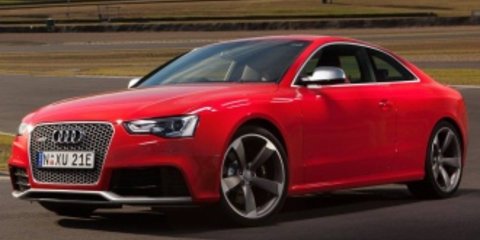bmw m4 gts vs audi rs5 2017
At times, we go through life wondering how we will react in certain situations. Will we step up and be strong, will we cope, are we ready
There’s a much larger discussion to all of this, but there are at least two car-based things I’ve been fastidiously training for all my life, mentally and physically
One, is someone saying “follow that car!”, the other is the chance to be the first person to drive something very special. You might think that last one is a stretch, as no one really waits all their life for that call… but if you know me, you’ll know it is true.
And so, when the opportunity to pilot the first of just 24 of the 2016 BMW M4 GTS in Australia came up… I was ready.
Only 720 examples of the hardcore, track-focused M4 are being built, which places it in the middle of the ‘rareness’ scale between the 2004 BMW E46 M3 CSL (1400 units) and 2009 BMW E92 M3 GTS (135 units)
Australia nabbed just 27 of the iconic CSLs, but the E92 GTS was only ever a left-hand drive product and, as such, none made it here. Worth noting, too, that the UK is only allocated 30 M4 GTS cars, making our smaller population (by about a third) pretty lucky to score a pony-load of the monster M.
Having recently driven the 331kW/550Nm 2016 BMW M4 Competition, I was keen to see just how much more ‘fast’ BMW could add to the F82 coupe
he 3.0-litre twin-turbo inline six-cylinder engine under the very light and aggressively vented carbon fibre bonnet is largely the same, but the GTS features a water injection system that allows BMW to extract an extra 37kW over the Competition, and 51kW more than a ‘standard’ M4, for a mean 368kW at 6250rpm. Torque is up too, to a massive 700Nm across 4000-5500rpm
So how does water give the M more M? It’s actually quite straightforward
The spray is injected to the manifold prior to combustion, where it evaporates and lowers the intake air temperature. This then allows a much more regulated environment for combustion and reduces the risk of knocking (the fuel/air mixture igniting due to temperature or pressure, rather than the spark), which means you can up-the boost pressure of the turbos while maintaining engine reliability.
And as we know, more boost means more power. Science
There’s a pump and reservoir tank for the water spray system under the floor in the boot, that amusingly sounds like your dentist’s fish tank when priming itself. Drivers note, you need to top this up every third or fourth fuel fill too.
Even with all this extra plumbing, the GTS weighs less than a standard M4, 27 kilograms to be precise (1473kg plays 1498kg).
That may not sound like much, but a bit here (carbon bonnet) and a bit there (titanium quad-tip exhaust) all adds up
What a car
The road opens up, right foot flat, the three litre now passing 6000rpm and the coloured tachometer in the head-up display blinking to warn you that a gear change would be handy any time now.
That rasp from the exhaust is now accentuated with a crisp wail. In a way the sound is similar to the ‘chainsaw’ buzz from the E45 CSL, if that chainsaw was turbocharged and made of titanium.
It echos off the armco, the trees, any surface available. Loud, violent… rrraaaAAARRRR – garblegarblegarble
Power delivery is very different to a normal M4. Where we are used to that solid wall of torque below 2100rpm, the GTS needs to be high in the rev range to rapidly gather pace. It’s no slug off the line mind you (BMW claim 3.8-seconds to 100km/h), it just feels much more linear below 4600rpm. Still quick, but without that all-or-nothing feeling of the regular car
It responds to throttle inputs in a much more measured way, and I’d go as far as to say a less ‘scary’ way than the normal M4. But that doesn’t stop that response from being fast and thoroughly entertaining.
To get the most out of the GTS, you must keep it above 5100rpm. And you don’t need to be asked twice
It’s a sensory experience, the physical feeling of acceleration heightened by the devilish cry from the hot titanium pipes, and the sweet smell of fuel vapour, that must be a byproduct of the water injection device.
audi rs5
When the drivetrain in the Audi RS5 TDI Concept goes into production – and it is confirmed to do so – the diesel engine will finally be fit for sports car usage.
‘Diesel’ and ‘sporty’ have become less oxymoronic in recent years, but you still don’t see new Ferrari and Lamborghini models clamouring beside trucks at oily fuel pumps when it’s time to fill them
For the most part on paper, the Audi RS5 TDI Concept should be no different to any other sweet, but hardly sporting diesel on the market.
On the outside it looks just like the $155,000 production petrol-powered RS5 coupe that has been selling in Australia for the past four years. Under the bonnet, however, the production RS5’s 4.3-litre naturally-aspirated V8 engine has been replaced by a 3.0-litre twin-turbocharged V6 diesel
It all seems humble enough, especially considering the V6 diesel is just like the one found in the Audi A6. It isn’t, though – it has been completely changed
Like a barnacle clinging to a wharf, this V6 diesel has an electric-powered compressor attached to its side. The RS5 TDI Concept uses a 47-volt power system on board, four times the voltage of the production RS5 but around nine times less than a proper hybrid model needs. In its boot, the RS5 TDI Concept gets a small lithium-ion battery pack and DC/DC bi-directional converter that respectively give and feed power to the electric compressor up front
Those two turbos can also be bigger, because the electric compressor is nullifying what would be turbo lag with its instant response. Above 3900rpm the electric compressor’s work is done. The bigger turbos start huffing and puffing away to generate proper performance car outputs
The RS5 TDI Concept produces 284kW of power at 4100rpm, and 760Nm of torque between 1350rpm and 2100rpm. A ‘normal’ twin-turbo V6 diesel in the Audi A6 makes 250kW and 650Nm, while the petrol V8 in the production RS5 makes a bit more power (332kW) but a massive 320Nm less torque.
But it’s really the immediate response of the RS5 TDI Concept more than the outright numbers that blow you away
At a test circuit in Sweden, Audi have lined up the RS5 TDI Concept for a drag race not against its RS5 twin, but rather an RS6 Avant that has a 4.0-litre twin-turbo petrol V8 engine that makes 512kW and 600Nm, and claims a 3.8-second 0-100km/h.
Heading out onto the main straight, there’s little giveaway that you’re in something properly quick – there’s a distant growl from the engine that still sounds more diesel than petrol, and it’s dominated by exhaust blurt to make a curious mix
Even the RS5’s seven-speed dual-clutch automatic gearbox has been replaced by an eight-speed automatic, despite torque-converter autos not being as crisp to shift as dual-clutchers that are now largely the sporting benchmark






























